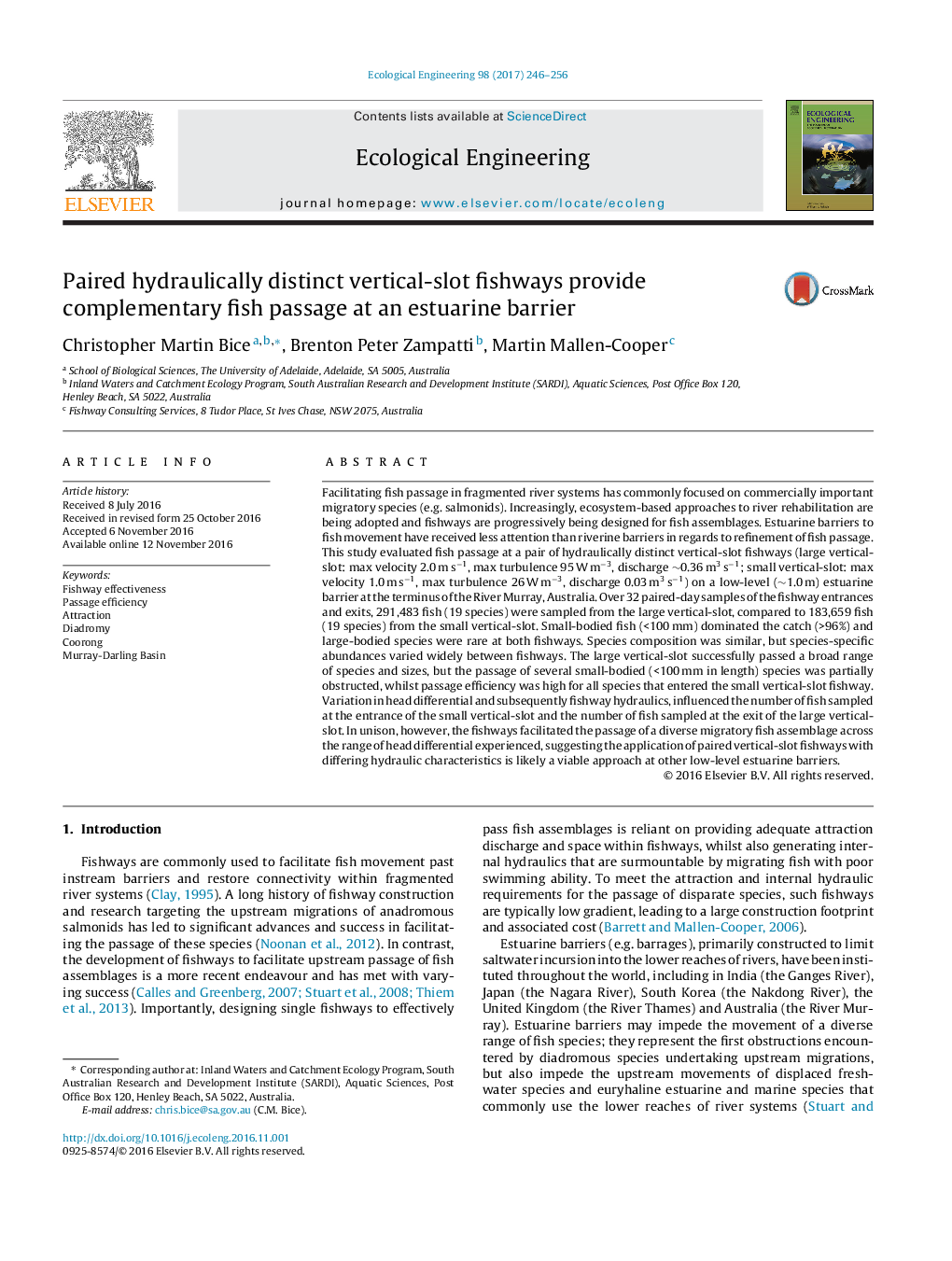| کد مقاله | کد نشریه | سال انتشار | مقاله انگلیسی | نسخه تمام متن |
|---|---|---|---|---|
| 5744075 | 1618001 | 2017 | 11 صفحه PDF | دانلود رایگان |
Facilitating fish passage in fragmented river systems has commonly focused on commercially important migratory species (e.g. salmonids). Increasingly, ecosystem-based approaches to river rehabilitation are being adopted and fishways are progressively being designed for fish assemblages. Estuarine barriers to fish movement have received less attention than riverine barriers in regards to refinement of fish passage. This study evaluated fish passage at a pair of hydraulically distinct vertical-slot fishways (large vertical-slot: max velocity 2.0 m sâ1, max turbulence 95 W mâ3, discharge â¼0.36 m3 sâ1; small vertical-slot: max velocity 1.0 m sâ1, max turbulence 26 W mâ3, discharge 0.03 m3 sâ1) on a low-level (â¼1.0 m) estuarine barrier at the terminus of the River Murray, Australia. Over 32 paired-day samples of the fishway entrances and exits, 291,483 fish (19 species) were sampled from the large vertical-slot, compared to 183,659 fish (19 species) from the small vertical-slot. Small-bodied fish (<100 mm) dominated the catch (>96%) and large-bodied species were rare at both fishways. Species composition was similar, but species-specific abundances varied widely between fishways. The large vertical-slot successfully passed a broad range of species and sizes, but the passage of several small-bodied (<100 mm in length) species was partially obstructed, whilst passage efficiency was high for all species that entered the small vertical-slot fishway. Variation in head differential and subsequently fishway hydraulics, influenced the number of fish sampled at the entrance of the small vertical-slot and the number of fish sampled at the exit of the large vertical-slot. In unison, however, the fishways facilitated the passage of a diverse migratory fish assemblage across the range of head differential experienced, suggesting the application of paired vertical-slot fishways with differing hydraulic characteristics is likely a viable approach at other low-level estuarine barriers.
Journal: Ecological Engineering - Volume 98, January 2017, Pages 246-256
